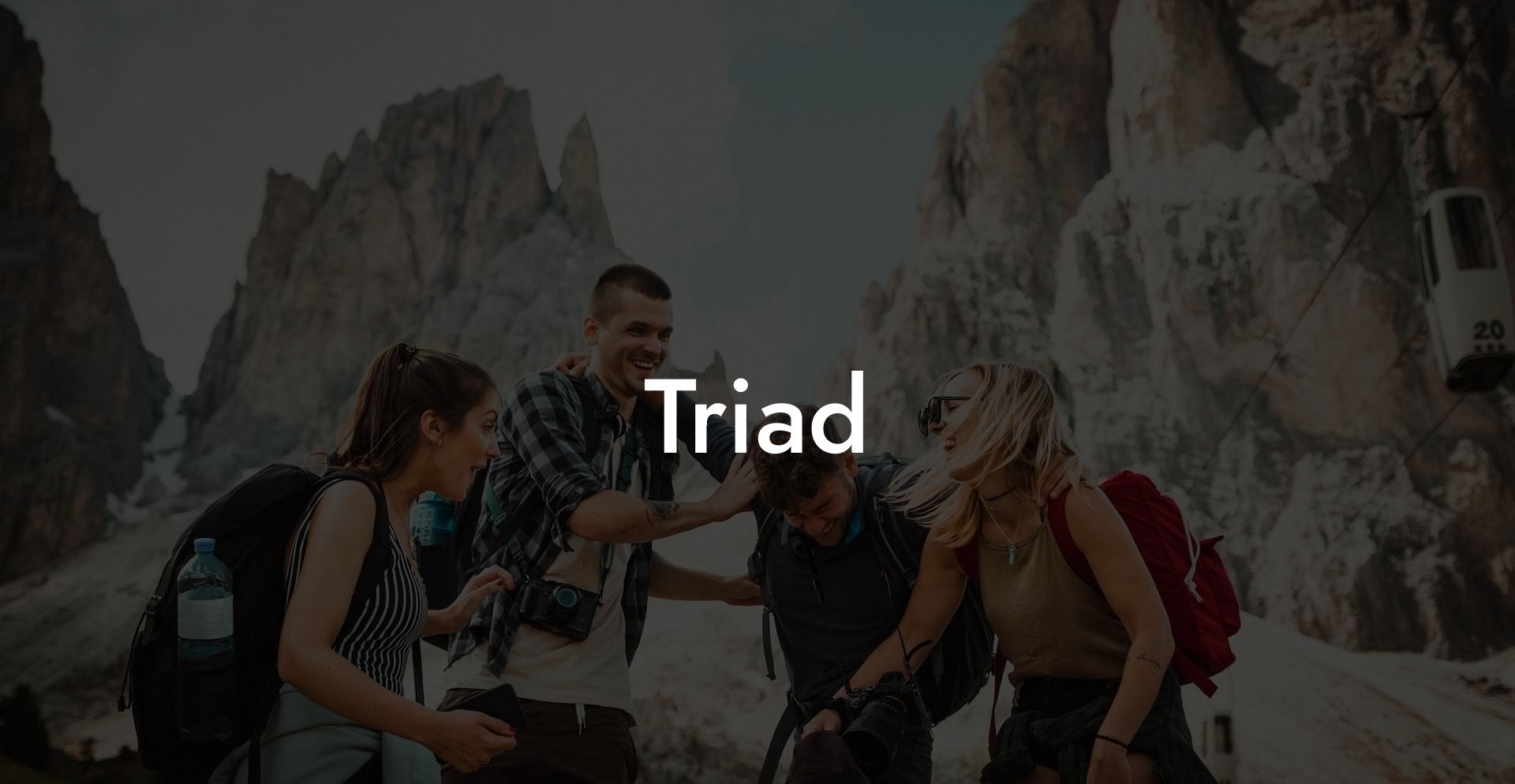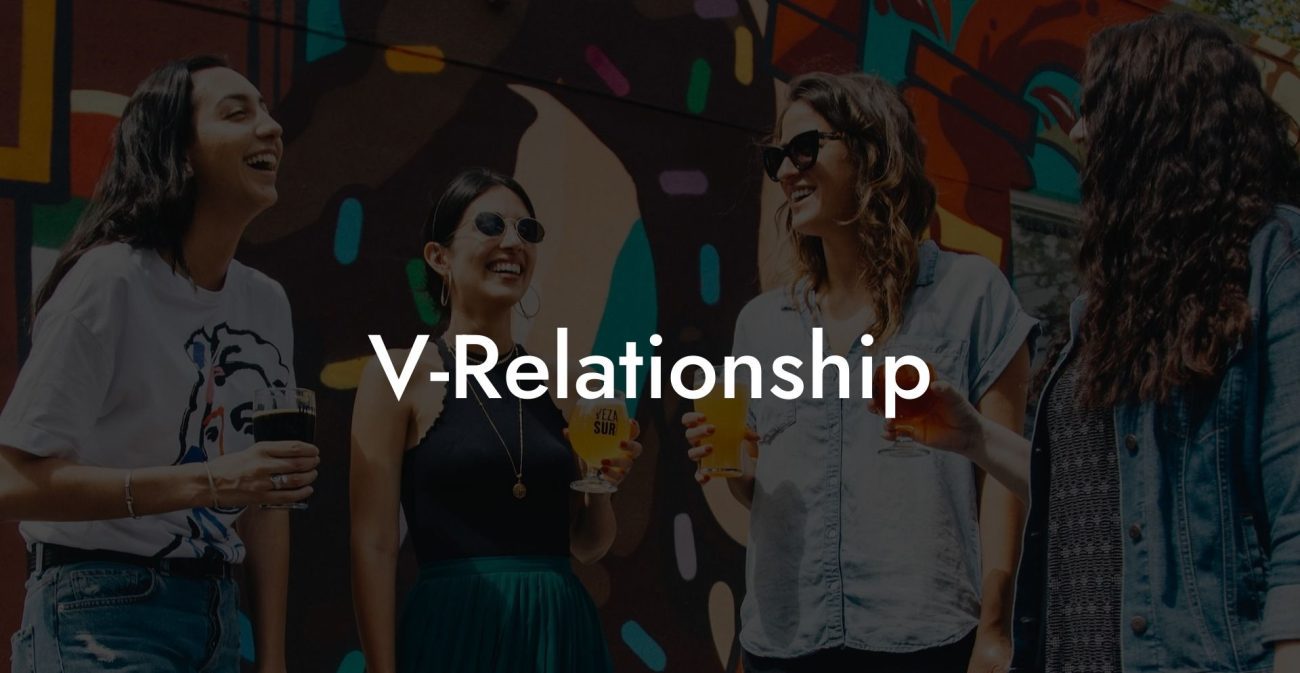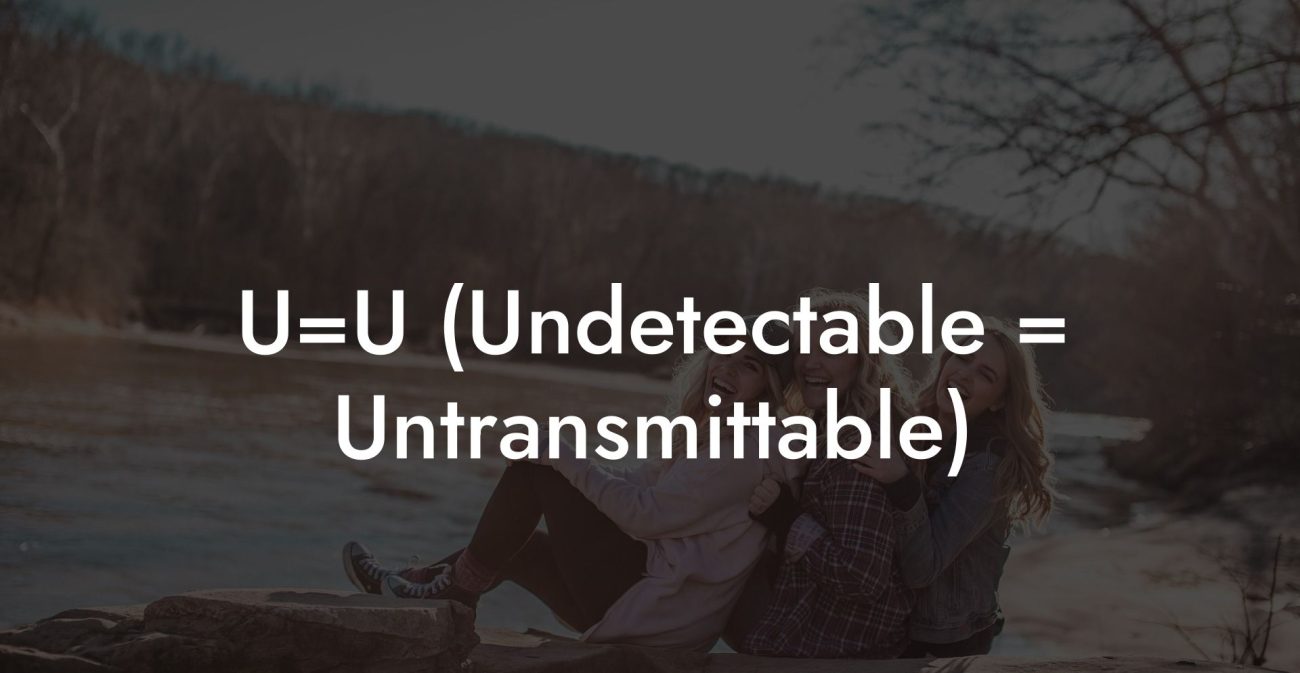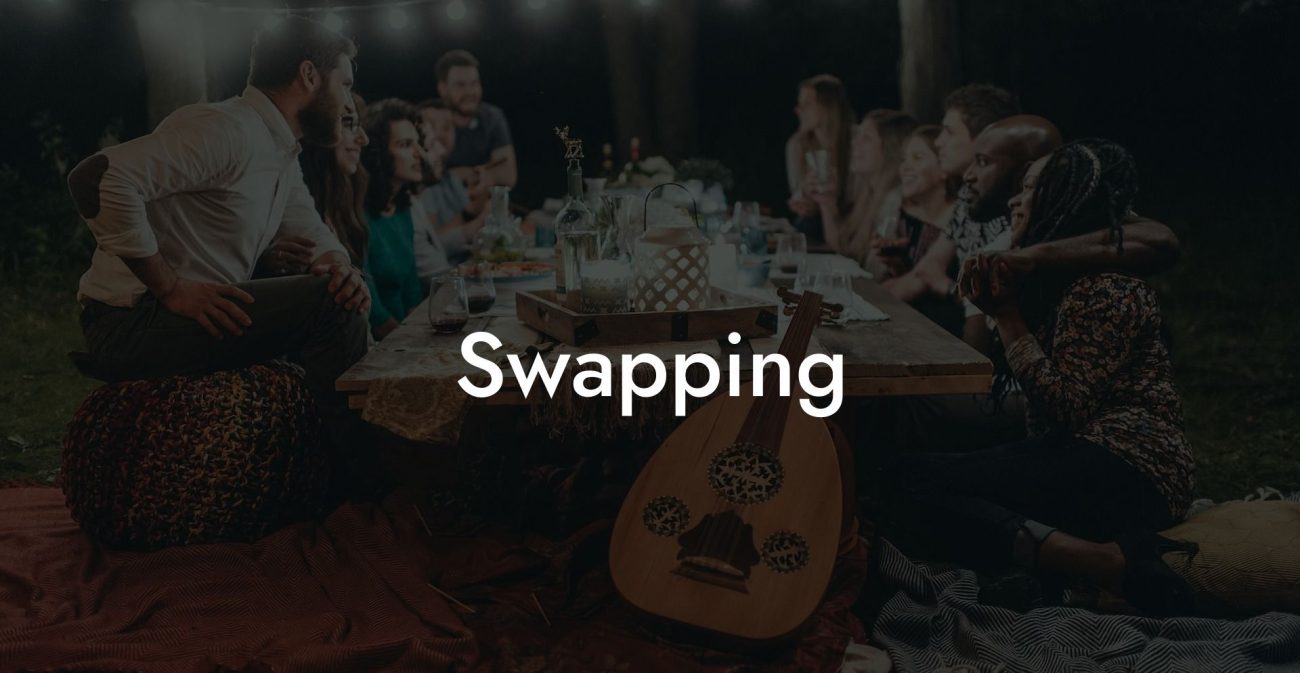Triad

Imagine a dynamic, interconnected trio of hearts that together form a balanced, harmonious unit, a relationship structure where each partner plays a distinct role while contributing to a collective whole. Welcome to Triad, a model of ethical non monogamy that redefines the boundaries of love by inviting three individuals to share intimacy, responsibility, and growth in an open, consensual environment. In a Triad, every connection is vital, and the energy among partners creates a unique tapestry of shared experiences, trust, and mutual empowerment. Get ready to explore how a triad can offer a rich, multi-layered approach to love that is both challenging and profoundly rewarding.
Quick Links to Useful Sections
- The Ethical Non Monogamy Term: Triad
- What Is a Triad?
- Core Principles of Triad Relationships
- Historical and Cultural Perspectives on Triads
- A Quick Video Explanation
- From Ancient Practices to Modern Innovations
- Cultural Shifts in Modern Relationship Models
- Everyday Dynamics of Triad Relationships
- Navigating the Emotional Landscape
- Establishing and Renegotiating Boundaries
- Fostering Mutual Trust and Empowerment
- Practical Tips for Maintaining a Healthy Triad
- Benefits of Embracing a Triad
- Deepened Emotional Connection
- Increased Personal Growth
- Improved Communication and Conflict Resolution
- Collective Resilience and a Robust Support System
- Challenges of Triad Relationships
- Managing Complex Emotions and Dynamics
- Balancing Individual Autonomy with Collective Needs
- Adapting to Evolving Boundaries
- Navigating External Judgment
- Frequently Asked Questions (FAQ)
- Resources and Community Support: Your Next Steps
The Ethical Non Monogamy Term: Triad
What Is a Triad?
A Triad is a form of ethical non monogamy where three people engage in a consensual, emotionally connected relationship. Unlike traditional dyadic relationships, a triad involves a third partner who is equally integrated into the relationship network, creating a dynamic where each individual contributes to and benefits from a shared bond. This structure can take many forms, romantic, sexual, or a mix of both, and is built on the foundations of open communication, mutual respect, and continuous negotiation of boundaries.
In a triad, the emphasis is on collaboration and balance. Each partner’s unique personality and needs add value to the collective whole, forming an intricate web of connections that, when nurtured, can lead to greater personal growth and a deeper sense of community. Rather than competing for limited love, a triad celebrates the idea that expanding your circle can amplify the joys and support available to everyone involved.
Core Principles of Triad Relationships
- Equality: Every partner in a triad is considered equal, with shared decision-making and responsibilities that reinforce mutual respect.
- Open Communication: Honest, ongoing dialogue is essential for addressing needs, renegotiating boundaries, and ensuring that all voices are heard.
- Mutual Consent: All aspects of the triad are based on clear, informed, and enthusiastic consent, ensuring that every individual feels safe and valued.
- Flexibility and Adaptability: Relationships in a triad evolve over time, and adaptive boundaries help accommodate the growth and changing needs of each partner.
- Interdependence: The strength of a triad lies in the interconnectedness of its members; each partner’s well-being is linked to the collective, fostering a robust support system.
- Conflict Resolution: Proactive and empathetic conflict resolution is key to maintaining harmony and ensuring that disagreements become opportunities for deeper understanding.
- Self-Awareness: Regular self-reflection helps individuals understand their own needs and triggers, contributing to a more balanced and harmonious relationship.
Historical and Cultural Perspectives on Triads
A Quick Video Explanation

From Ancient Practices to Modern Innovations
The concept of triads is not entirely new; throughout history, various cultures have recognized and practiced forms of multi-partner relationships. In some ancient societies, triads and larger polyamorous networks were integrated into social and religious structures, reflecting a worldview that celebrated collective support and shared responsibilities. However, with the rise of monogamy and the emphasis on nuclear families in many parts of the world, these practices became marginalized.
In recent decades, as ethical non monogamy has gained visibility and acceptance, triads have re-emerged as a viable, fulfilling alternative to traditional dyadic relationships. Modern triads often emphasize equality, open communication, and the dismantling of hierarchy, allowing all members to feel equally valued and empowered. This resurgence reflects a broader cultural shift towards exploring diverse relationship structures and questioning the limitations of conventional romance.
Cultural Shifts in Modern Relationship Models
Today’s global, interconnected society has paved the way for innovative relationship models that defy traditional norms. Millennials and Gen-Z, in particular, are drawn to non-traditional structures that emphasize authenticity, flexibility, and shared growth. The digital age has facilitated the formation of communities where diverse relationship styles are celebrated, and triads have become an increasingly common subject of discussion in online forums, podcasts, and academic research.
Modern narratives about love increasingly highlight that the heart’s capacity to connect is not finite. In a triad, each partner contributes to a collective well-being, reinforcing the idea that more can indeed be better when it comes to love. This cultural evolution challenges the notion that romantic fulfillment must be limited to a single, exclusive partnership.
Everyday Dynamics of Triad Relationships
Navigating the Emotional Landscape
Living in a triad requires a delicate balance between individual needs and collective harmony. Regular communication is key to navigating the emotional complexities of having three interrelated connections.
- Scheduled Check-Ins: Establish regular meetings, both as a group and individually, to discuss feelings, assess needs, and adjust boundaries.
- Self-Reflection: Engage in personal introspection to understand your own emotions and how they impact the dynamic of the triad.
- Open Forums: Create safe spaces for all partners to share their experiences and offer constructive feedback, ensuring that everyone’s perspective is considered.
Establishing and Renegotiating Boundaries
One of the most critical aspects of a triad is the continuous negotiation of boundaries. Since each partner’s needs may evolve over time, adaptive boundaries are essential to maintain balance.
- Initial Agreements: Begin by discussing and agreeing on each person’s comfort levels, expectations, and limits. These initial discussions set the foundation for trust.
- Regular Reassessment: As the relationship progresses, revisit your boundaries to ensure they remain relevant and supportive of each partner’s growth.
- Flexible Negotiation: Encourage a culture where adjustments are seen as a natural part of the relationship, rather than as signs of failure or conflict.
Fostering Mutual Trust and Empowerment
In a triad, mutual trust is the cornerstone of a harmonious dynamic. Each partner must feel confident in the security of their connection and the integrity of the collective unit.
- Transparent Communication: Consistently share your thoughts, feelings, and concerns with one another to build a foundation of trust.
- Collaborative Decision-Making: Involve every partner in important discussions and decisions, ensuring that the triad operates as a cohesive unit.
- Supportive Feedback: Offer and welcome constructive feedback, turning challenges into opportunities for collective learning and improvement.
Practical Tips for Maintaining a Healthy Triad
- Create a Shared Calendar: Use a digital calendar to coordinate schedules, plan group activities, and ensure that everyone stays connected.
- Designate “Alone Time” and “Together Time:” Balance individual space with group interactions to honor both personal autonomy and collective bonding.
- Engage in Joint Activities: Organize regular outings or projects that allow all three partners to interact and build shared memories.
- Practice Empathetic Listening: When conflicts arise, take time to listen to each partner’s perspective before responding, ensuring that all voices are heard.
Benefits of Embracing a Triad
Deepened Emotional Connection
Triads offer a unique opportunity to form a layered, intricate network of emotional bonds. The interplay between three partners can lead to a richer, more complex form of intimacy.
- Multi-Dimensional Intimacy: Each partner contributes different strengths and perspectives, resulting in a more nuanced and fulfilling emotional connection.
- Enhanced Empathy: Engaging with multiple perspectives fosters greater understanding and empathy among all partners.
Increased Personal Growth
The dynamic environment of a triad challenges you to continuously reflect on your own needs, desires, and boundaries. This process of self-discovery can lead to significant personal growth and a deeper understanding of who you are.
- Self-Awareness: Regular self-reflection in the context of a triad helps you identify and articulate your true emotional needs.
- Resilience: Navigating the complexities of three interconnected relationships can build emotional resilience and adaptability.
Improved Communication and Conflict Resolution
With open, ongoing dialogue as a cornerstone, triads tend to foster superior communication skills. Addressing issues proactively and collaboratively helps prevent misunderstandings and resolves conflicts in a constructive manner.
- Proactive Dialogue: Regular check-ins ensure that potential issues are addressed early on, before they escalate.
- Empathetic Resolution: Open communication promotes understanding, allowing conflicts to be resolved with compassion and fairness.
Collective Resilience and a Robust Support System
One of the most powerful benefits of a triad is the strength derived from a collective support network. When each partner is invested in the well-being of the others, the entire relationship becomes more resilient against external pressures and internal challenges.
- Shared Strength: The collective emotional resources of a triad provide a safety net during challenging times.
- Unified Support: When every partner contributes to the network, the overall structure becomes more adaptable and supportive.
Challenges of Triad Relationships
Managing Complex Emotions and Dynamics
The interplay of three distinct personalities can sometimes lead to a complex web of emotions that requires careful navigation. Differences in communication styles, expectations, or personal needs may result in misunderstandings or conflicts.
- Tip: Establish regular, structured check-ins to discuss feelings and adjust boundaries as needed.
- Tip: Use conflict resolution techniques such as active listening and “I” statements to ensure that every partner feels heard.
Balancing Individual Autonomy with Collective Needs
In a triad, it can be challenging to maintain a sense of individual identity while also nurturing the collective bond. Some partners may struggle with feelings of neglect or envy if their personal needs aren’t fully met.
- Tip: Encourage each partner to engage in both personal activities and shared experiences, ensuring that individual space is respected.
- Tip: Clearly articulate your personal needs during group discussions and be open to renegotiating your role within the triad.
Adapting to Evolving Boundaries
As relationships grow and change, boundaries that once felt secure may need to be revisited and adjusted. This continuous adaptation can sometimes be destabilizing if not managed with care.
- Tip: Regularly review your relationship agreements to ensure they reflect your current emotional landscape.
- Tip: Approach boundary renegotiation as a collaborative process, using feedback from all partners to guide adjustments.
Navigating External Judgment
Despite increasing acceptance of diverse relationship models, traditional societal expectations may still cast judgment on triadic relationships. This external pressure can sometimes lead to self-doubt or strain within the triad.
- Tip: Build a supportive network of like-minded individuals who validate your approach to love.
- Tip: Focus on the positive impact of your collective relationships and let external opinions fade into the background.
Frequently Asked Questions (FAQ)
1. What is a triad in ethical non monogamy?
A triad is a relationship structure in which three people engage in a consensual, interconnected relationship. Each partner contributes to the collective dynamic, and all individuals share a mutual commitment to open communication and boundary negotiation.
2. How does a triad differ from other forms of ethical non monogamy?
Unlike dyadic relationships, a triad involves three interconnected partners who interact and support one another, creating a more complex, interdependent network of love.
3. What are the core principles of a triad?
Core principles include equality among partners, open communication, mutual consent, adaptive boundaries, collaborative decision-making, and shared support.
4. How can I establish a healthy triad?
Start by having open, honest conversations with all potential partners about your expectations, boundaries, and needs. Establish clear agreements and schedule regular check-ins to ensure that everyone remains aligned and supported.
5. What benefits does a triad offer?
Benefits include deeper, multi-dimensional emotional connections, increased personal growth, improved communication and conflict resolution skills, and a robust collective support network.
6. What challenges might arise in a triad?
Challenges can include managing complex group dynamics, balancing individual autonomy with collective needs, adapting to evolving boundaries, and navigating external judgment or societal norms.
7. How important is communication in a triad?
Communication is vital in a triad. Regular, honest dialogue helps prevent misunderstandings, resolves conflicts, and ensures that every partner feels heard and valued.
8. Can triads be stable over the long term?
Yes, triads can be stable and fulfilling when founded on strong communication, mutual respect, and a willingness to continuously renegotiate boundaries as everyone grows.
9. How do adaptive boundaries work in a triad?
Adaptive boundaries are agreements that can be regularly revisited and adjusted to reflect the evolving needs of each partner. They help ensure that all relationships remain healthy and consensual.
10. What role does self-reflection play in a triad?
Self-reflection is essential for understanding your own needs and how they fit within the collective dynamic. It enables you to contribute authentically and to adjust your boundaries as necessary.
11. How can shared experiences enhance a triad?
Shared experiences build a collective memory and strengthen the bonds between partners. They foster a sense of unity and create a robust support system that benefits the entire triad.
12. Where can I find additional resources on triads and ethical non monogamy?
Additional resources include books like The Ethical Slut by Dossie Easton & Janet Hardy, podcasts such as Multiamory, and online communities like r/polyamory that offer insights and guidance on forming and maintaining triadic relationships.
Resources and Community Support: Your Next Steps
- The Ethical Slut by Dossie Easton & Janet Hardy – A foundational resource that explores ethical non monogamy and provides practical strategies for creating healthy triads.
- Podcasts: Listen to Multiamory and similar podcasts for expert advice, personal stories, and innovative ideas on managing triadic relationships.
- Online Communities: Join forums like r/polyamory to connect with others, share your experiences, and gain support for your triad journey.
- Workshops and Webinars: Attend events on relationship dynamics, ethical non monogamy, and conflict resolution to deepen your understanding and enhance your triad’s resilience.
- Therapy and Counseling: Consider professional guidance if you need help managing complex emotions or navigating challenges specific to triadic relationships.
By exploring these resources and incorporating the practical strategies outlined in this guide, you can fully embrace the transformative potential of a triad. Celebrate the intricate interplay of connections, nurture the collective strength of your group, and allow your relationships to evolve into a resilient, supportive, and deeply fulfilling network of love.
Lost & confused by all of the terms, types and seemingly made up 3 letter acronyms?? We've got you. Check out our Ethnical Non-Monogamy Dictionary >>
Useful Interruption: Not sure which relationship vibe fits you best? Take our Relationship Test, it’ll give you the real insight into your natural relationship style. Then, dive into our binge-worthy guides (from the tried-and-true to the “wait, that’s a thing?”) and find the perfect relationship type for your life:
- Monogamy
- Open Relationships
- Ethical Non-Monogamy
- Solo Polyamory
- Non-Hierarchical Polyamory
- Hierarchical Polyamory
- Relationship Anarchy
- Swinging
Now back to the main article but yeah take the test...












